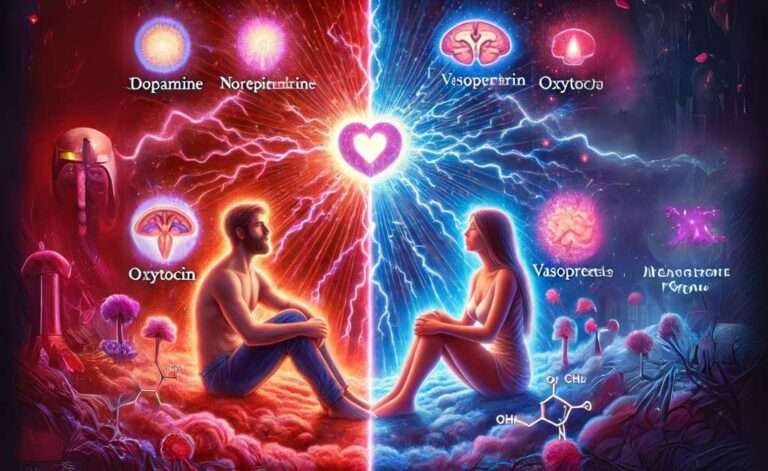Can We Measure Love? How Psychologists Define
Can We Measure Love? How Psychologists Define and Study Romantic Affection
Introduction: Can Love Be Measured? 💖📏
Love is often described as a mystical, immeasurable emotion, yet psychologists and neuroscientists have spent decades attempting to define, quantify, and study romantic affection. But can love really be measured? If so, how?
In this article, we’ll explore: ✔ Psychological theories and scales used to measure love ✔ How brain scans and hormone levels reveal love’s effects ✔ The role of emotions, behavior, and attachment in romantic affection ✔ The limitations of measuring something as complex as love
Let’s dive into the fascinating world of love measurement! 🔬💑
1. The Psychological Theories of Love Measurement 🧠💡
Psychologists have developed various models to understand and categorize love.
1.1 The Triangular Theory of Love (Dr. Robert Sternberg) 🔺
One of the most widely used psychological models to measure love is the Triangular Theory of Love, developed by psychologist Robert Sternberg.
✔ Three components of love: 1️⃣ Intimacy → Emotional closeness and trust. 2️⃣ Passion → Physical attraction and excitement. 3️⃣ Commitment → The decision to stay together long-term.
📌 Expert Insight: “Love is not a single emotion but a combination of intimacy, passion, and commitment, which can be measured in different relationships.” — Dr. Robert Sternberg, Psychologist
💡 Real-World Application: ✔ Relationship tests based on Sternberg’s theory help couples understand which elements are strong or weak in their love life.
🔍 Further Reading: Sternberg’s Triangular Theory of Love (APA)
1.2 The Love Scale (Dr. Zick Rubin) 💑📊
Psychologist Zick Rubin developed a Love Scale to distinguish between liking and loving someone.
✔ The Love Scale Measures: 🔹 Attachment → How much you depend on your partner emotionally. 🔹 Caring → Willingness to sacrifice for your partner’s happiness. 🔹 Intimacy → Frequency of deep emotional sharing.
📌 Expert Insight: “Love is measurable through behaviors like eye contact, verbal affirmations, and physiological responses.” — Dr. Zick Rubin, Social Psychologist
💡 Real-World Application: ✔ Psychologists use the Love Scale in relationship counseling to assess emotional connection.
🔍 Further Reading: Rubin’s Love Scale Study
2. Can Brain Scans Measure Love? The Neuroscience Perspective 🧠🔬
Scientists have studied how love affects the brain using functional MRI (fMRI) scans.
2.1 What Brain Scans Reveal About Love
🔍 Key Findings: ✔ Romantic love activates the dopamine reward system, similar to addiction (Fisher et al., 2005). ✔ Long-term love shows activation in oxytocin and serotonin-related brain regions (Acevedo et al., 2011). ✔ The brain’s ventral tegmental area (VTA) lights up when people see photos of their romantic partners.
📌 Expert Insight: “Romantic love is a powerful neurological state, engaging the brain’s reward circuitry.” — Dr. Helen Fisher, Biological Anthropologist
💡 Real-World Application: ✔ Brain scans help researchers study the difference between lust, attraction, and attachment.
🔍 Further Reading: Harvard Neuroscience of Love
3. The Role of Hormones in Love Measurement 🏡❤️
Love isn’t just a psychological experience—it’s also a biochemical one.
3.1 Key Love Hormones 🧪💘
✔ Dopamine → Creates excitement and pleasure. ✔ Oxytocin → Strengthens bonding and trust. ✔ Serotonin → Regulates emotions and attachment. ✔ Vasopressin → Linked to long-term monogamous bonding.
🔍 Key Findings: ✔ High dopamine levels in early-stage love mimic addiction-like behaviors. ✔ Long-term relationships show increased oxytocin, promoting deep trust and commitment. ✔ Oxytocin levels rise after physical affection (hugs, kisses, sex), reinforcing connection.
📌 Expert Insight: “Oxytocin and vasopressin are crucial in sustaining long-term romantic bonds.” — Dr. Sue Carter, Neuroscientist
💡 Real-World Application: ✔ Couples therapy sometimes focuses on physical connection to boost oxytocin levels and restore closeness.
🔍 Further Reading: National Institute of Health – Love & Hormones
4. The Challenges of Measuring Love 🤔💭
Despite scientific advancements, measuring love is not perfect due to its subjective and evolving nature.
4.1 Limitations of Love Measurement
🔻 Love is influenced by culture, personality, and experiences. 🔻 Passion and intimacy fluctuate over time, making love hard to quantify. 🔻 Psychological tests and fMRI scans cannot capture the full depth of emotional connection.
📌 Expert Insight: “While science can measure aspects of love, its meaning is deeply personal and subjective.” — Dr. Barbara Fredrickson, Positive Psychologist
💡 Real-World Application: ✔ No single test can define love—it must be understood in both scientific and personal contexts.
🔍 Further Reading: Stanford Psychology of Love
Frequently Asked Questions (FAQs) About Measuring Love ❓
1. Can love really be measured scientifically?
✔ Partially! Brain scans, hormone tests, and psychological scales help quantify love’s effects, but emotions remain deeply personal.
2. What’s the most accurate way to measure love?
✔ A combination of relationship tests, behavioral observations, and neurological studies gives the best insights.
3. Do brain scans show different types of love?
✔ Yes! fMRI research shows different brain activity for passionate love, attachment, and companionship.
4. Can you increase love through hormones?
✔ Activities like physical touch, deep conversations, and shared experiences naturally boost oxytocin and dopamine.
5. Why does love feel different over time?
✔ Early love is dopamine-driven (obsessive and thrilling), while long-term love transitions to oxytocin-driven stability.
Final Takeaways: Can Love Be Measured? 💖📏
✔ Psychologists use love scales to quantify romantic affection. ✔ Neuroscience shows love affects brain activity in measurable ways. ✔ Hormones like oxytocin and dopamine influence attachment and bonding. ✔ Despite scientific tools, love remains deeply personal and subjective.
💡 Final Thought: Love can be studied, observed, and measured, but its true meaning is felt in the heart. ❤️
📚 Further Reading & External Sources:







